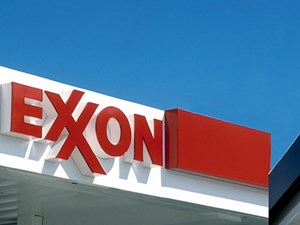Exxon CEO’s quest for mega deal is a bet on oil’s staying power
(Bloomberg) — ExxonMobil Corp. boss Darren Woods is poised to emulate his two predecessors with a career-defining mega deal that — for better or worse — would likely transform the oil giant.
Exxon’s talks to buy Pioneer Natural Resources Co., a U.S. rival with a market value of $55 billion, represent a strategic bet underpinned by Woods’s belief that oil and gas will be central to the world’s energy mix for decades to come, whatever path the transition to a lower-carbon future takes.
But the bet comes with risks. It would form a shale-focused giant producing nearly 4.5 million barrels of oil equivalent a day — 50% more than the next biggest supermajor — at a time when the world is still seeking ways to slash greenhouse gases. The merger also may raise antitrust concerns.
Big strategic bets with the potential to shape the future of the world’s energy system have strong precedent at Exxon, which has survived wars, nationalization, and public outcry throughout its 140-year history. Former Chief Executive Officer Lee Raymond’s successful $80 billion merger with Mobil Corp. in 1999 ushered in the era of the cost-cutting supermajor amid low oil prices, successfully positioning the company for the commodities supercycle of the 2000s. By contrast, Rex Tillerson’s ill-timed $31 billion acquisition of XTO Energy in 2010 called the top of the early U.S. shale gas revolution and preceded a decade of low industry returns.
The potential Pioneer deal will similarly define Woods’s tenure, now into its sixth year.
While electric cars, batteries and renewable power are growing fast, global oil demand is currently at a record high, and the International Energy Agency expects continued growth to 105.7 million barrels a day in 2028 from about 100 million barrels now. Analysts expect peak oil to come as soon as the early 2030s, but whether it plateaus or declines rapidly is uncertain.
Either way, Pioneer is likely to be valuable to Exxon as it navigates the energy transition. Shale provides much more flexible production, with wells brought on in months compared to years for offshore developments. The Permian Basin’s proximity to Exxon’s Gulf Coast refineries gives it a built-in advantage over more risky developments overseas. Woods may even be able to make a low-carbon case for the purchase — Exxon currently plans to reach net zero in the Permian by 2030 for its own operations (though not from customers burning its oil and gas).
Raymond’s merger with Mobil also fits the tenor of the times. It added refineries and international resources in an era of anxiety over non-OPEC production. Raymond aggressively cut costs, drove efficiencies, and by 2008 — less than a decade after the deal — Exxon produced what was then the highest profit of any U.S. corporation in history.
Tillerson’s purchase of XTO sought to position Exxon to be the dominant player in the shale revolution, as the U.S. went from being short of gas to having an abundance. The problem for Tillerson was that he underestimated the size and speed of the shift in gas production, which quickly overwhelmed pipeline infrastructure and domestic demand. That sent prices crashing from more than $4 per British thermal unit at the time of the deal to average $3 for the following decade.
In the years that followed, it turned out the real money in shale was in oil — such as that in the Permian Basin — not gas.
The potential Pioneer transaction is unlikely to suffer the same fate, according Raoul LeBlanc, a senior analyst at S&P Global. Pioneer’s oil and gas production is well-linked to global markets, and Exxon already has significant expertise in the Permian. It had little experience of shale gas when it bought XTO, and ran the company as a separate division for several years after the purchase.
“XTO was an entry into shale at a time when shale plays were less mature and better suited to risk-taking independents,” LeBlanc said in an interview. “This is a very different deal. It’s a proven resource with low risk and lots of economies of scale.”
As ever, a key determining factor in the deal’s success will be its price, which the Wall Street Journal reported could be roughly $60 billion, citing people familiar with the matter. That “strikes us as slightly low for a company with the unique scale and quality of inventory held by Pioneer,” said Andrew Dittmar, a senior analyst at Enverus.
Exxon has been one of the best performing energy stocks coming out of the pandemic as demand for oil and gas surged, then got an additional boost from Russia’s invasion of Ukraine. The company’s shares have more than tripled in the past three years, outperforming Pioneer by more than 40 percentage points even after Friday’s moves. The company also built up a cash position of $30 billion, nearly 10 times the level two years ago, prompting speculation that Woods was building up a war chest.
“While XOM’s balance sheet and large cash hoard would enable it to pay mostly or all in cash, we anticipate any deal to include a mix of cash and equity,” Dittmar said in an interview.
When asked about potential deals in July, Exxon would be “picky,” Woods said, indicating that any purchase would have to sit within the company’s core skill set as opposed to a new play, like XTO.
“The opportunities have to be bigger than what Exxon Mobil or any potential acquisition could do independent of one another,” he said. “One plus one has to equal three here.”



